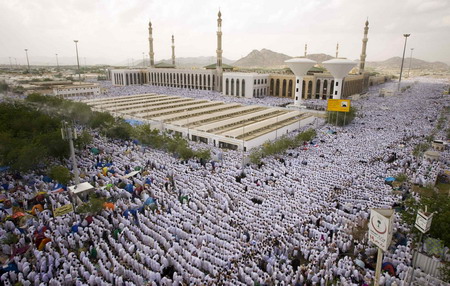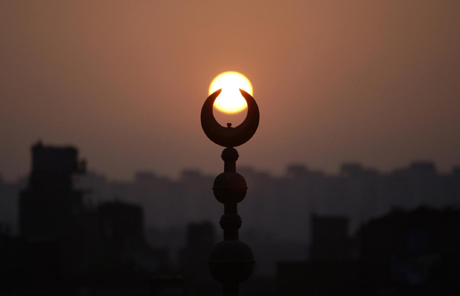Top pic
Two million Muslims prepare to stone devil at haj
(Agencies)
Updated: 2009-11-27 09:53
|
|
|
|
MUZDALIFA, Saudi Arabia: Some two million Muslims headed to Muzdalifa on Thursday after spending the day at the plain of Arafat to prepare to cast stones at the devil in the most dangerous part of the annual haj pilgrimage.
Bright weather greeted the pilgrims after heavy rain hit the nearby city of Jeddah, gateway to Mecca, on Wednesday. Some 77 people were killed, none of them pilgrims, most of whom were swept away by currents and drowned, state television said.
The bridge has been the scene of a number of deadly stampedes -- 362 people were crushed to death there in 2006 in the worst haj tragedy since 1990.
Saudi authorities have made renovations to ease the flow of pilgrims at the bridge, adding an extra level so that pilgrims have four platforms from which to throw stones.
The fittest chose to walk the distance of about 3 km (2 miles) to Muzdalifa on a special highway joining the sites while others clung to any form of transportation they could find.
Young Saudis sped around on motorbikes looking for customers in a hurry and seeking to avoid the congested traffic.
Aisha Mennan, 63, from Morocco, managed a smile as she sat against a wall waiting for a bus. "I just cried and cried while I stood and prayed in Mount Arafat. You really feel something special as if you are standing before the Almighty," she said.
"Now I can die in peace. My two sons and three daughters have been saving for years to send me here and when the money was ready I had to wait another three years before I got picked by a ballot. I'm very lucky to be here," said Mennan.
In Mecca, pilgrims flocked to Arafat to pray until sunset. They set up tents on a plain, squatted on the side of the road in shelters or stayed at the nearby Namira mosque.
About 1.6 million pilgrims have come from abroad for the haj, the world's largest regular religious gathering and a duty for all Muslims to perform at least once if possible. Many wait for years to get a visa under a strict quota system.
















